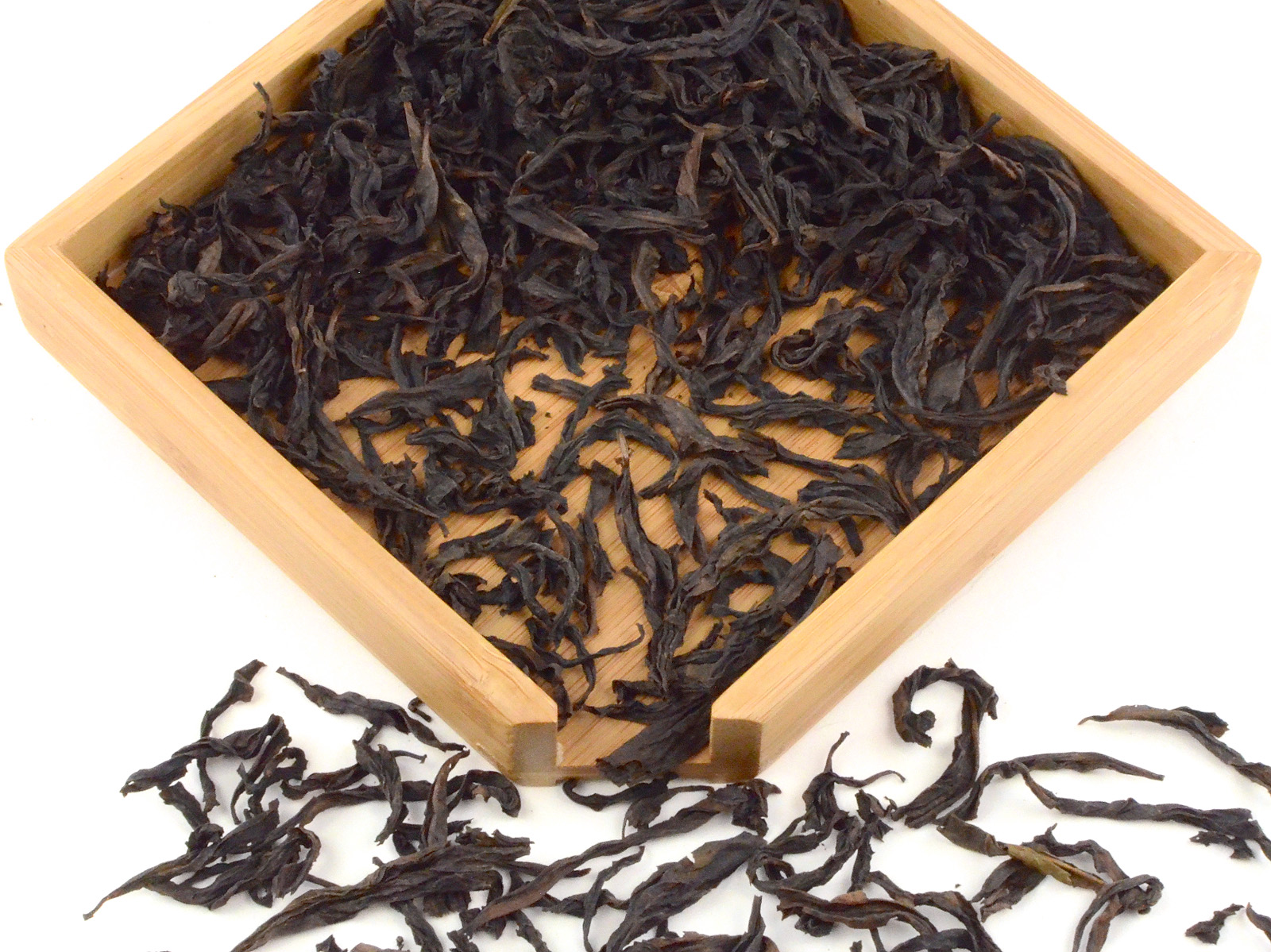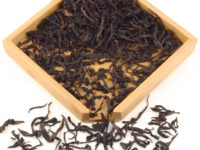Xiao Hong Pao (Little Red Robe)
Rock Wulong Tea 2021
A combination of both traditional and modern roasting techniques crafts a tea with a developed aroma and balanced flavor. It possesses a richly layered flavor comparable to the more famous Da Hong Pao while being more affordable.
- Tea Origin
- Wuyishan City, Fujian Province, China
- Tea Bush
- Jin Guanyin #204
- Tea Maker
- Zhou Yousheng and Huang Shiying
- Harvest Time
- Late April
- Plucking Standard
- Zhong kai mian
Naming Little Red Robe
The name, Little Red Robe, is our invention. This tea is usually just called Da Hong Pao when sold in China. Zhuping and Austin did not find this tea in Wuyishan but in a little back alley tea shop in Chongqing, Sichuan Province on the other (western) side of China. At the time, there was some local talk about it, and Austin went to investigate. By chance, he met Zhou Yousheng, the tea maker. When he returned home, he recommended that Zhuping try the tea. The next spring she visited Zhou Yousheng and his wife, Huang Shiying, at their home and factory in a remote valley inside the Wuyishan mountains, where her family has lived and made tea for many generations.
What had made this “Da Hong Pao” stand out was that they had used a new hybrid that had been made with Buddha’s Hand, a large leaf cultivar from the local area, and Teiguanyin, a cultivar from southern Fujian. This unlikely pairing created the Jin Guanyin #204 cultivar. Lui Guoyin and Chen Dehua were involved in the creation of the hybrid.
About the Shi Family
The Shi family is one of the oldest and continuous tea-making families in the area. The oldest Shuixian (Narcissus) tree is planted behind the family house, and every year the local government comes to participate in ceremonies to honor the old tree, called Qing Long’s Shui Xian.
The family was one of the first to be allowed to put the new cultivar into production and had remarkable results. They also made a very good black tea with the new bush as well, highlighting the potential of the cultivar. We have a very close relationship to the family and carry many of their other teas (Laocong Shuixian (Old Bush Narcissus), Que She (Sparrow’s Tongue), Qi Dan (Mystery Red), and Bai Ji Guan (White Rooster Crest)), of which we are very proud. Huang Shiying also helps us with our tours of the area. Who could ask for a better guide!
Sourced from Wuyishan
The Wuyi Mountain area’s elevation is not especially high, averaging only 650 meters above sea level. However, tea produced in Wuyi Mountain is considered superior, owing to the area’s pristine environment, rich volcanic rock soil, and biodiversity. Wuyi Mountain tea masters still practice traditional manufacturing techniques, most famously, the charcoal drying of tea leaves at low temperatures, a process that requires months to complete.
We source Little Red Robe from Mr. Zhou Yousheng. Tea has been his family’s main crop for generations. As both farmers and producers, Mr. Zhou and his family have also retained the traditional processing techniques to craft this tea. Their process begins by picking the tea at the end of April. After a morning picking, the leaves are withered throughout the afternoon until they are soft. The softened leaf is then oxidized indoors for about eight hours before it finally begins its drying process. The leaf first goes through a quick oven drying before it is sorted and then loaded onto bamboo trays where it is slowly dried over charcoal for over seven hours. The tea is then left to rest for a full month before a second round of roasting, if the tea maker chooses to develop the roast further. The second roasting is hotter and twice as fast than the first at just five hours. The goal of this roasting is to both develop the tea’s character and stabilize it.
This special drying process uses both a traditional charcoal roast and modern oven drying to make a tea with a developed flavor but without a heavy toasted smell. This is the main difference between our Xiao Hong Pao and our Da Hong Pao. Without the heavy roasting, we can more easily sense the natural richness of the flavor and aroma of this special cultivar.
No chemical fertilizer, pesticide, or herbicide was used in the production of this tea. Click here to read more about our promise to fair trade and the environment.













